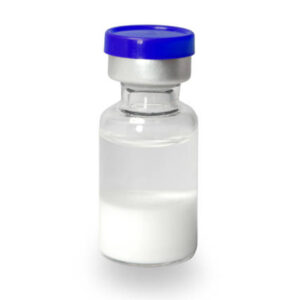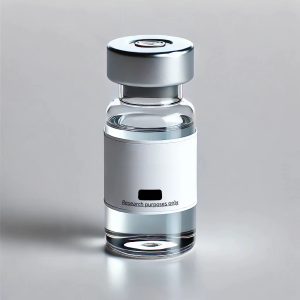Growth Hormone Releasing Products (GHRPs)
Products that promote Growth Hormone (GH) release are widely used in anti-aging, muscle building, fat loss, and performance enhancement. These products work by stimulating the pituitary gland to release growth hormone, which is essential for muscle growth, fat metabolism, bone density, and overall vitality.
Below is a summary of products that promote GH release, their mechanisms of action, and how they differ:
1. Growth Hormone Releasing Peptides (GHRPs)
GHRPs are peptides that stimulate the pituitary gland to release growth hormone through their action on specific receptors. GHRPs can vary in their potency, selectivity, and side effects, but their general mechanism is similar.
Common GHRPs and Their Mechanisms:
- GHRP-6:
- Mechanism: GHRP-6 works by binding to ghrelin receptors, which are involved in hunger regulation and GH release. It increases GH secretion by mimicking ghrelin, a naturally occurring peptide that stimulates growth hormone release.
- Effect: Increases GH release, stimulates appetite, and promotes muscle growth and fat loss. However, it can cause increased hunger and water retention.
- Uses: Popular in muscle-building and fat loss regimens.
- GHRP-2:
- Mechanism: Like GHRP-6, GHRP-2 binds to ghrelin receptors, but it stimulates GH release more strongly and selectively compared to GHRP-6. It does not increase appetite as significantly.
- Effect: Stimulates GH production and can also increase fat loss and muscle gain. It is known for having minimal side effects compared to other GHRPs.
- Uses: Fat loss and muscle-building applications, favored for recovery and strength gains.
- Ipamorelin:
- Mechanism: Ipamorelin is a selective GHRP that specifically stimulates growth hormone release without significantly affecting cortisol, prolactin, or appetite.
- Effect: Promotes GH secretion in a gentle, natural manner. It is known for being well-tolerated with minimal side effects compared to other GHRPs.
- Uses: Used for muscle gain, fat loss, anti-aging, and recovery purposes, particularly where minimal side effects are desired.
- GHRP-1:
- Mechanism: GHRP-1 is similar to GHRP-2 but has a milder effect on growth hormone release. It works by stimulating ghrelin receptors to promote GH secretion.
- Effect: Increased GH levels and may help in fat burning and muscle retention. It is less potent than GHRP-2 and has fewer side effects.
- Uses: Recovery and fat loss, useful in cutting cycles.
2. Growth Hormone Secretagogues (GHSs)
GHSs are a broader class of compounds that include both peptides and non-peptides that stimulate growth hormone release by acting on the GH secretagogue receptor (GHS-R) in the pituitary gland.
Common GHSs and Their Mechanisms:
- CJC-1295 (Without DAC):
- Mechanism: CJC-1295 is a growth hormone-releasing hormone (GHRH) analog, which means it acts by stimulating the GHRH receptor to increase GH release. Unlike GHRPs, CJC-1295 works by enhancing natural GH pulses.
- Effect: It prolongs and increases GH release while also raising IGF-1 (Insulin-like Growth Factor 1) levels, which plays a key role in muscle growth and tissue repair.
- Uses: Muscle growth, anti-aging, fat loss, and enhanced recovery.
- CJC-1295 (With DAC):
- Mechanism: The DAC (Drug Affinity Complex) in CJC-1295 with DAC makes this version of the peptide long-acting by extending its half-life. It still stimulates the GHRH receptor but with less frequent injections compared to regular CJC-1295.
- Effect: Increases growth hormone release in a sustained manner, leading to improved muscle recovery, fat loss, and enhanced tissue repair.
- Uses: Anti-aging, fat loss, and muscle growth with fewer injections.
- Sermorelin:
- Mechanism: Sermorelin is a GHRH analog that stimulates the pituitary gland to release growth hormone naturally. It has a shorter half-life compared to CJC-1295.
- Effect: Stimulates natural GH production and increases IGF-1 levels, aiding in muscle growth and anti-aging.
- Uses: Common in anti-aging treatments, fat loss, and muscle retention.
3. Melanocortin Receptor Agonists (Like Melanotan-2)
Melanotan-2:
- Mechanism: Melanotan-2 is a synthetic peptide that stimulates the melanocortin receptors in the brain, which leads to increased melanin production. While not a direct GH secretagogue, it indirectly promotes growth hormone release by stimulating the pituitary gland.
- Effect: Primarily used for skin tanning, but also enhances fat metabolism and has mild anti-aging effects due to its ability to influence melanin and skin health.
- Uses: Mainly used for skin tanning and fat loss, with a secondary benefit of improved skin quality and anti-aging.
Differences Between GHRPs and GHRHs:
- GHRPs (Growth Hormone Releasing Peptides) stimulate the release of GH by binding directly to ghrelin receptors in the pituitary gland.
- GHRHs (Growth Hormone Releasing Hormones) stimulate the release of GH through the GHRH receptor, and CJC-1295 is an example of a GHRH analog.
- GHRPs tend to work quickly and often require frequent injections, while GHRHs (especially with DAC) have longer-lasting effects and may require fewer doses.
Applications of GHRPs and GHRHs:
- Muscle Growth: Both GHRPs and GHRHs help stimulate muscle protein synthesis, leading to muscle growth and strength gains.
- Fat Loss: They promote lipolysis, leading to fat burning while maintaining lean muscle mass.
- Recovery: Growth hormone is essential for tissue repair and cell regeneration, which makes these peptides effective for recovery after intense physical activity.
- Anti-Aging: Increased GH levels help improve skin quality, collagen production, and promote overall youthful vitality.
- Bone Density: Both GHRPs and GHRHs can help maintain or increase bone density, especially in older adults.
Conclusion:
Products that stimulate growth hormone release—including GHRPs, GHRHs, and other growth hormone-related peptides—offer a variety of benefits such as muscle growth, fat loss, anti-aging effects, and improved recovery. While GHRPs stimulate GH release via the ghrelin receptor, GHRHs like CJC-1295 stimulate the GHRH receptor for a more sustained GH release. Both classes of peptides have their applications in fitness, bodybuilding, and anti-aging, but should be used with proper guidance and medical supervision to avoid potential side effects.







